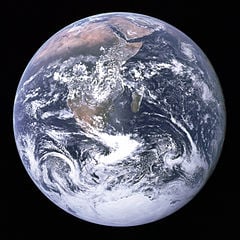I appreciate a good news source as much as the next person – perhaps even more. And, I would like to think I recognize one when I see/hear one. But, sometimes – though it’s rare – even the best news sources when it comes to reporting the news do not tell one all that one should know.
A case in point: On Fri., Jun 3, 2022, I tuned into the one television-based news program that I frequent the most. In the summary segment, reported was information regarding atmospheric level of carbon dioxide and also mentioned was how the CO2 level, based on apparent new scientific data, was the fact that this was now more than 50 times what it was at a time just prior to the beginning of the Industrial Revolution, presumably.
In addition, it was also announced that the Earth hasn’t been this hot in 4 million years. In other words, the last time Earth’s temperature was this high was 4 million years ago.
After I gave more thought to the information that had just been presented, what I deduced was that the report was lacking information.
When I think about the level of CO2 in air, level, to me, means the same thing as concentration, in this case, around 418 parts per million parts of air. To my knowledge the level of CO2 in air just prior to the start of the Industrial Revolution circa 1750, was roughly 270 parts per million (ppm). In doing the math 418 ppm is less than double the 270 ppm CO2-in-air level. Double, meanwhile, is nowhere near the 50-times level. So, being that is the case, I was then left to figure out what the “more than 50 times” mention was in reference to.
What I arrived at could, in my way of thinking, only mean one thing: The reference did not have to do so much with the level or concentration of carbon dioxide in air as it had to do with the amount of CO2 in the atmosphere.
So, here is what we know. Today, humans are responsible – through the burning of fossil fuels and other means – for an annual roughly 40 billion tons of air-based CO2. In order to be 50 times the amount at pre-industrial times, the annual amount that existed in air at that time could only have been at a quantity equal to 800 million tons. (800 million X 50 = 40 billion tons).
Therefore, what I am left to conclude regarding this one item is that just before the Industrial Revolution began the amount of annual carbon dioxide in air put there by human beings was on the order of a bit less than 800 million tons yearly.
Now, as to the point of the Earth not being this hot in 4 million years, I would also want to know what the concentration was of CO2 in air at that time (in ppm) to learn if that was lower, the same or higher than what it is today. If that could be determined, then this might allow for the further shedding of light related to human-influenced global warming in this day and age.
It is helpful to keep in mind that 4 million years ago humans then were non-existent. That being said, if not just greenhouse-gases influenced, what else could have contributed to that high a surface temperature rise? If strictly greenhouse-gases (GHGs) influenced, what precipitated the climb in GHGs (e.g. heightened volcanic activity?), was the increase gradual or sudden and, as far as the atmospheric temperature and/or GHGs-recovery/recoveries is/are concerned, here, too, was it/were they gradual or sudden?
At the end of the day regarding climate change and global warming, there still remain unknowns. As it has to do with these, the more we learn and the more information we have at our collective disposal, the better for all concerned.
Receiving reliable (and complete) news in support of, well, that there is the icing on the cake in idiom speak!
– Alan Kandel
Copyrighted material.
